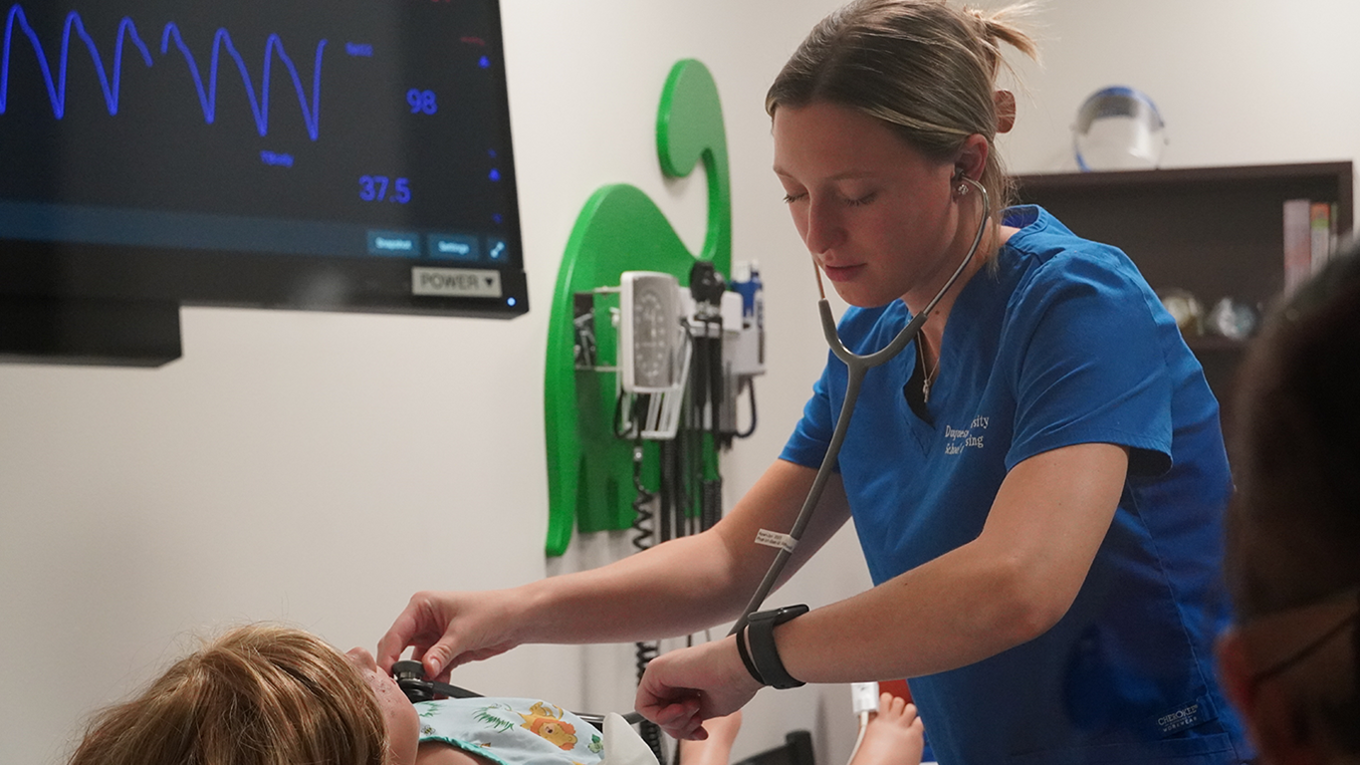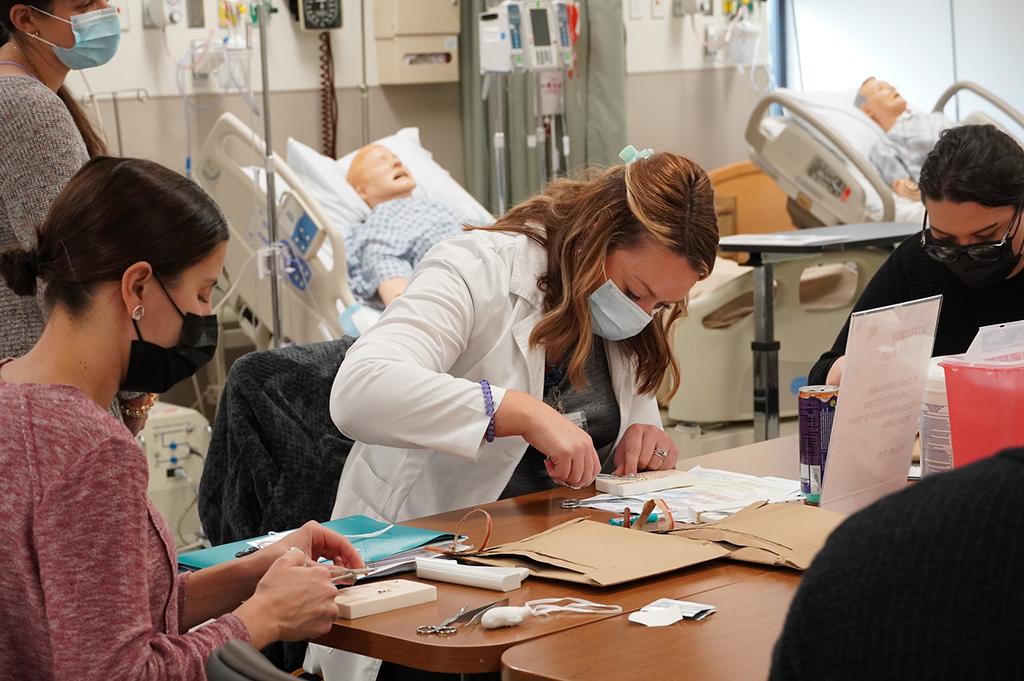Cameos of Caring Honor Nursing Faculty
Two nursing school faculty have been recognized for their outstanding contributions and their role in advancing the profession.

Driven by compassion. Leading with confidence.
U.S. News & World Report School of Nursing Rankings for 2025-2026
Taking a holistic approach to student learning and patient care has been one of the hallmarks of Duquesne School of Nursing since our founding in 1937. Duquesne was among the first schools of nursing in the country to offer the Bachelor of Science in Nursing, which remains our most popular program. In 1997, Duquesne became a pioneer in offering a fully online Doctor of Philosophy (Ph.D.) which has enabled us to offer several other online programs including the Masters of Science in Nursing (MSN), Post-Master’s Certificates (PMC) and the Doctor of Nursing Practice (DNP).
Today, we offer extraordinary clinical experiences at sites located in the heart of Pittsburgh, which is on the cutting edge of health care opportunities and research. Our students enjoy outstanding first-time licensure pass rates for the BSN (96.43%) and 100% for each three of our MSN Nurse Practitioner programs.
Our nursing graduates and faculty are making a difference as practitioners and researchers, educators and scholars, leaders and innovators. Now, it’s your turn.

BSN, BSN Second Degree, BME/BSN Dual Degree

Master’s Programs, Post-Master’s Certificates, Doctoral Programs


Learn more about our BSN program and Duquesne University by attending our information session!
During the session, a School of Nursing representative will discuss the admission process, the Bachelor of Science in Nursing program and life at Duquesne. A tour of our Learning and Simulation Center will

Please join us for an information session and program overview of the Second Degree BSN Program!
Please register for the info session.

Learn more about our BSN program and Duquesne University by attending our information session!
During the session, a School of Nursing representative will discuss the admission process, the Bachelor of Science in Nursing program and life at Duquesne. A tour of our Learning and Simulation Center will
Two nursing school faculty have been recognized for their outstanding contributions and their role in advancing the profession. How Abigail became Duquesne’s first Flynn Fellow and found her calling for pediatric oncology Duquesne Graduate Nursing students immerse themselves in Native American culture to connect clinical practice with cultural understanding.Nursing Stories and News
Cameos of Caring Honor Nursing Faculty
Carrying Compassion Forward
Building Bridges in Health Care | Duquense University School of Nursing
Faculty
The Second Degree BSN program at Duquesne University is an opportunity for those individuals who want to be a nurse to have an accelerated program to work as that field, and we need nurses. There are an abundant number of opportunities for these individuals to make an impact on our mission of providing excellent care to our patients and families. At UPMC Children’s we love partnering with our friends at Duquesne to provide a pediatric experience for the second degree students should they choose to want pediatrics. We see the success stories and welcome the students commitment to our goals.
Duquesne prepared me well, by offering some of the best clinical experiences in all of Pennsylvania. Pittsburgh has a lot of trauma and specialized hospitals, such as Allegheny General Hospital, UPMC Presbyterian and the Children's Hospital of Pittsburgh. My clinical experiences provided a well-rounded education and prepared me for my role as a Mayo Clinic’s Medical ICU nurse after graduation.
Allegheny General Hospital (AGH) is fortuante to have recruited many nurses from the Duquesne Second Degree BSN program. These nurses thrive in caring for the complex patients at AGH and are confident due to their thorough preparation at Duquesne. Nurses in the Second Degree program often bring life experience to their nursing career that benefit our patients and their families.
What drew me to Duquesne are the number of hospitals in the area. There are major hospital systems like UPMC and Allegheny Health Network along with dozens of hospitals within a 30-minute drive. It’s great to be able to experience these health care networks and use these different types of nursing software.
Pittsburgh has an international reputation for leadership in medicine and technology. As a member of both the Biomedical Engineering and Nursing communities at Duquesne, I have loved the endless opportunities that both programs have offered and I cannot wait to begin to narrow down the many career choices.
The baccalaureate degree program in nursing, master's degree program in nursing, Doctor of Nursing Practice program and the post-graduate APRN certificate program at Duquesne University are accredited by the Commission on Collegiate Nursing Education. Duquesne University's Doctor of Nursing Practice (DNP) in Nurse Anesthesia program is accredited by the Council on Accreditation of Nurse Anesthesia Educational Programs (COA). Our programs are fully approved by the Pennsylvania State Board of Nursing.